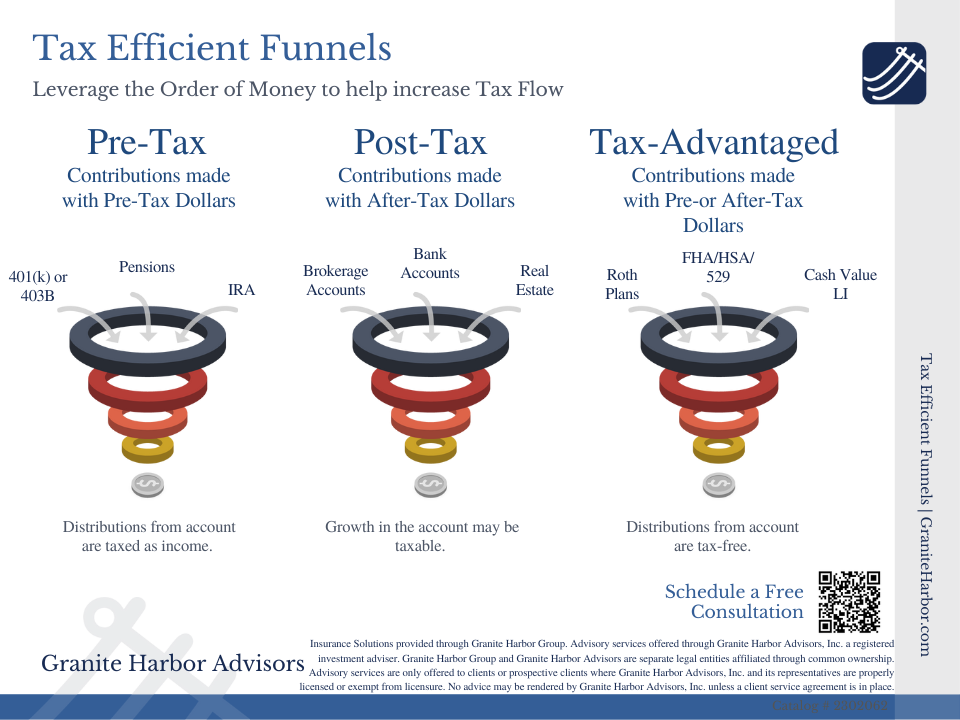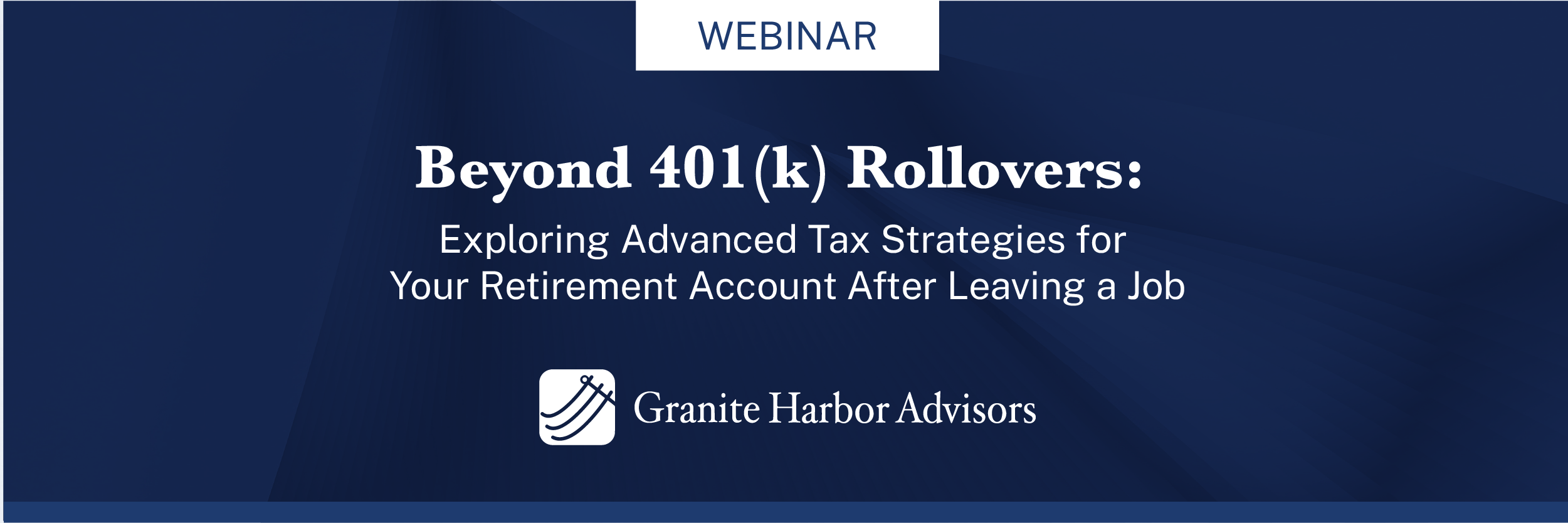What to do with Your 401(k) after Leaving a Job: Key Considerations & Advanced Tax Strategies
When navigating a job transition, whether entering retirement or an unexpected layoff, one crucial aspect that requires careful consideration is what to do with your 401(k) plan. Making informed choices is of utmost importance to safeguard your financial future. By taking stock of your existing plan and understanding its characteristics, you can weigh your options more effectively and make choices that align with your long-term financial goals.
Exploring Your Options: What to Do with a 401(k) After You Leave a Job?
Your 401(k) Can Stay Where It Is (At Least Temporarily)
One option to consider is leaving your 401(k) with your previous employer; however, it is important to evaluate the pros and cons of this decision. While leaving it untouched offers convenience, it could come with limited investment choices and restricted administrative functions for accessing your funds. The exception to this is if you fall within the age range of 55 to 59 ½ and anticipate needing to access some of the funds during that period, your 401(k) can provide added flexibility over an IRA for accessing these funds early without incurring a 10% early withdrawal penalty. Your plan may also cash out your vested balance without consent if it is under a certain dollar limit, so you will need to review your plan specifics when considering this option.
Roll Over Your 401(k) to a New Plan
Another option that may be available to you is rolling your funds into a 401(k) with a new employer. This may be a desirable option to simplify management within one account. Additional reasons you may consider this option would be to postpone RMDs beyond age 73 if you plan to continue working, or to take advantage of qualified longevity contracts (QLACs) with their increased contributions limits under Secure Act 2.0.
Roll Over Your 401(k) into an Individual Retirement Account (IRA)
Likely the most common option for moving a 401(k) is rolling it into an IRA. This option allows you to preserve the tax-advantaged status of your retirement funds so you will not be subject to immediate taxation or penalties. One of the biggest advantages of the IRA rollover is the opportunity to diversify and capitalize on a broader array of investment options. Especially for those seeking retirement income, the administrative capacity for 401(k) plans is typically limited when it comes to systematic withdrawals or as-needed distributions. In most cases, if individuals need their money, they may be required to withdraw it entirely from the 401(k) plan or limited to a certain number of withdrawals per year. This lack of flexibility further reinforces the preference for rolling over the funds into an IRA.
Cash It Out with a Lump-Sum Distribution
Taking a lump sum distribution might seem tempting, especially if your end in employment was unexpected. However, it is crucial to consider the potentially costly implications of such a decision. In addition to losing its tax-advantaged status for future growth, a lump sum distribution could push you into a higher tax bracket, resulting in both income taxes and early withdrawal penalties if you are under age 59 ½. Unless your 401(k) balance is relatively small, this option is generally not the ideal solution.
Key Considerations When Rolling a 401(k) to an IRA
When it comes to rolling a 401(k) into an Individual Retirement Account (IRA), there are a number of important factors to consider both to maximize tax-advantaged savings opportunities and to avoid potentially costly pitfalls. Here are a few to consider:
Post-termination Contributions
Are there going to be dollars that get contributed after termination that we need to leave the plan open for?
401(k) Loans
Are there any outstanding loans on the plan? If so, do you want to take a deemed distribution, and just pick up the tax liability and not have to pay back the loan? Or perhaps if you received a severance as part of the separation and have some cash flow, do you want to write a check to pay that loan off to preserve the maximum tax benefit?
Expense Ratios
What are the fees within your investment options? Factoring in the internal costs of your plan holdings is another key consideration for evaluating whether funds should stay in a 401(k) plan for a period of time.
Vesting Schedules
Are the funds fully vested or are there any limitations to note to avoid complications during the rollover process?
Company Stock Treatment
When your 401(k) consists of company stock, there are additional unique considerations, including reviewing for concentration risk, determining how much you may decide to keep, and how you should sell and transfer these holdings. If you have highly appreciated holdings, examining the option of Net Unrealized Appreciation (NUA) is a critical step before making any transfers. With this approach, you may be eligible to pay long-term capital gains rates rather than ordinary income tax rates, which could result in hundreds of thousands if not millions of dollars of tax savings.
Example: What to do with Exxon Mobil Company Stock (XOM)
If an Exxon Mobil employee bought company stock at 10 a share inside the plan, and it is now worth
100 a share, that $90 of growth per stock can be treated as long-term capital gains rather than ordinary income—if this is identified and transferred properly from his 401(k). After these funds are moved to an IRA, that option is gone, so it is critical to work with a knowledgeable advisor and evaluate this option up front.
Strategies to Avoiding Early Distribution Penalties between Ages 55 to 59 ½
Age and tax implications play a significant role in determining the optimal course of action for individuals retiring after age 55 but younger than 59 ½. Understanding the tax differences between moving the funds to an IRA and leaving them in the 401(k) plan is essential. In some cases, leaving a portion of the funds in the 401(k) may be advantageous, as it allows penalty-free withdrawals after age 55. Another option for individuals retiring before 59 ½ may be utilizing “72(t) distributions.” Through this approach, you may be able to avoid early distribution penalties from IRAs and employer-sponsored retirement plans by taking substantially equal periodic payments (SEPP). Again, it is important to work with a knowledgeable advisor when considering this option as the consequences for not following the tax code could be significant.
Understanding Different Tax Qualifications
Not all dollars in your 401(k) are created equal. You may have a wide range of tax diversification or qualifications to consider and preserve when the time comes to move your assets. These classifications may include pre-tax dollars, Roth dollars, and post-tax dollars, which may originate from various sources such as employee elective deferral, employer match, or employer discretionary contributions. Properly allocating these funds during the rollover process ensures they are moved to the most suitable accounts, taking advantage of the maximum tax benefits and potential future growth.

Managing Logistics: How to Move your 401(k) after Leaving a Job
With all of these considerations in mind, working with a knowledgeable investment advisor can help streamline the process, identify the biggest tax-saving opportunities and common missteps to avoid. To hear how to manage this conversation with your plan provider, watch our recent webinar:
Navigating the complexities of 401(k) management after a job transition requires careful evaluation of your options. By taking stock of your existing plan, understanding its characteristics, and considering the potential benefits and drawbacks of each option, you can make well-informed choices that align with your financial goals. Whether you decide to leave your 401(k) with your previous employer, opt for a rollover to a new plan, cash out or roll to an IRA, the key is to prioritize your personal financial situation long-term financial well-being. Consult with a financial advisor or retirement planning professional to ensure you make the best decision for your unique circumstances.
FAQ: 401(k) Management After Leaving a Job & Tax Strategies
1. What should I do with my 401(k) after leaving a job?
You generally have four options: leave your 401(k) with your old employer, roll it into your new employer’s plan, move it to an IRA, or cash it out. The best choice depends on your financial goals, tax situation, and retirement timeline. Rolling into an IRA often provides more investment options and flexibility, but fees may be higher.
2. Is it better to roll over my 401(k) to an IRA or a new employer plan?
Rolling over to an IRA usually offers broader investment choices and flexibility, while moving to a new employer plan may allow you to postpone required minimum distributions (RMDs) if you’re still working. Your decision depends on fees, investment options, and tax considerations. Many people choose an IRA for long-term control and potentially lower costs.
3. Can I cash out my 401(k) when I leave my job?
Yes, but cashing out a 401(k) is often costly. You’ll owe income tax on the distribution, and if you’re under age 59 ½, you may also face a 10% early withdrawal penalty. Cashing out also ends the tax-advantaged growth potential. Unless your balance is small or you urgently need funds, it’s usually best avoided.
4. What happens to 401(k) loans if I leave my job?
If you leave with an outstanding 401(k) loan, most plans require quick repayment, typically by the next tax deadline. If unpaid, the loan becomes a “deemed distribution,” subject to income taxes and possible penalties. Some choose to pay it off with severance or personal funds, while others accept the tax liability depending on their situation.
5. How do I avoid 401(k) early withdrawal penalties?
To avoid the 10% penalty before age 59 ½, consider options like leaving funds in your 401(k) if you separate after age 55 (the “Rule of 55”), using 72(t) distributions, or rolling over to an IRA. Each option has strict IRS rules. Consulting an advisor helps ensure penalty-free access while maintaining long-term retirement benefits.
6. What is Net Unrealized Appreciation (NUA) and how does it affect 401(k) rollovers?
NUA applies when you hold company stock in your 401(k). Instead of paying ordinary income tax on all gains, you can roll shares into a taxable account and pay capital gains tax on the appreciation. This strategy can significantly reduce taxes on highly appreciated stock but must be carefully executed before transferring funds into an IRA.
7. How does the Secure Act 2.0 impact 401(k) rollovers?
The Secure Act 2.0 increased contribution limits for Qualified Longevity Annuity Contracts (QLACs) and pushed back required minimum distributions to age 73. If you roll your 401(k) into a new employer plan and continue working, you may be able to delay RMDs further. These updates make rollover timing and strategy more important than ever for tax efficiency.
8. Should I consult a financial advisor before moving my 401(k)?
Yes. A financial advisor can help you weigh rollover options, identify tax-saving strategies, and avoid costly mistakes. They can also assess factors like vesting schedules, expense ratios, company stock rules, and withdrawal flexibility. Because tax and retirement rules are complex, professional guidance helps ensure your decision supports your long-term financial and retirement goals.
https://www.irs.gov/retirement-plans/substantially-equal-periodic-payments

